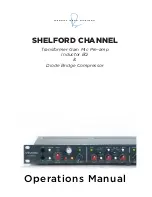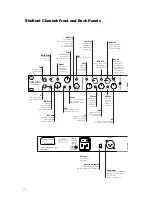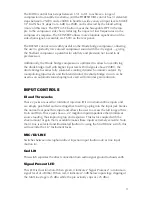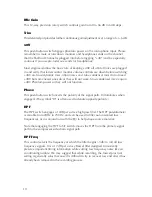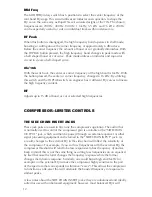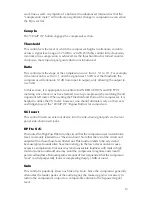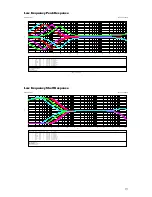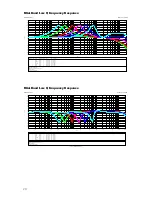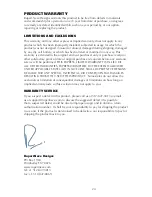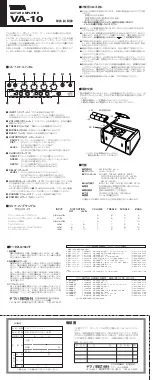
12
Mid Freq
The MID FREQ rotary switch has 6 positions to select the center frequency of the
mid band EQ stage. This circuit utilizes an inductor and capacitors to shape the
EQ curve, the same way as Rupert Neve’s console designs of the 70’s. The chosen
frequencies are 200 Hz, 400 Hz, 900 Hz, 1.8 kHz, 3.5 kHz and 7.5 kHz. 200 Hz
can be especially useful for cuts on individual tracks within a dense mix.
HF Peak
When this button is disengaged, the high frequency band operates in shelf mode,
boosting or cutting above the corner frequency at approximately 6 dB/octave.
Below the corner frequency the amount of boost or cut gradually diminishes. With
the HI PEAK button pressed, the high frequency band changes to peak mode with
a bell shaped boost or cut curve. Peak mode utilizes an inductor and capacitor
circuit to create a bell-shaped curve.
8k/16k
With the switch out, the center or corner frequency of the high band is 8 kHz. With
the button pressed, the center or corner frequency changes to 16 kHz. By utilizing
this switch and the HI PEAK switch, an engineer has 4 different EQ curves to finesse
the high frequency content.
HF
Adjusts up to 15 dB of boost or cut at selected high frequencies.
COMPRESSOR-LIMITER CONTROLS
THE SIDE CHAIN INSERT JACKS
These jack pairs are used to fine tune the compressor’s operation. The audio that
is normally used to control the compressor gain is available at the “SIDECHAIN
OUTPUT” jack, which can then be passed through an external equalizer or other
signal processing equipment and returned to the “SIDECHAIN INPUT” jack. As
a result, changes to the external EQ in the side-chain will affect the sensitivity of
the compressor. For example, if you cut low frequencies with the external EQ, the
compressor threshold will tend to be less responsive to bass frequency dynamics.
Keep in mind; this is not the same thing as cutting low frequencies on an equalizer
by itself because the latter changes the frequency response while the former
changes the dynamic response. Similarly, one could boost high end (6 kHz for
example) on the external EQ to make the compressor highly sensitive to the part
of the spectrum that corresponds to sibilance (“esses”). This allows the compressor
to function as a de-esser that will attenuate the boosted frequency in response to
sibilant peaks.
A few notes about the SIDE CHAIN INSERT jacks: they are unbalanced and ideally
suited for use with unbalanced equipment; however, most balanced EQ’s will

